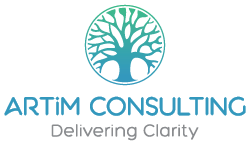Last week we examined the three engagements intended to improve strategic alignment and the associated changes in employee engagement. The first intervention was an articulation of company direction, which the surveys conducted before and after indicated, was associated with a small, but positive increase in engagement. The second intervention involved aligning employee goal agreements in a vertical top-down cascade and surveys before and after the intervention indicated a positive increase in engagement, this time a little larger than for the first intervention. The third intervention consisted of multiple simultaneous alignment-focused changes. Surveys indicated a much higher increase in engagement compared to both previous interventions.
The hypothesis for the first intervention was that the lack of a clearly articulated company direction was at least one of the reasons for low engagement. This was based on the reasoning that if employees have a clear idea of where the company is headed and how it intends getting there, this knowledge can serve as a context for what employees see happening around them and this context also guides their actions. The observed improvement in the survey results suggests this reasoning may be valid.
The hypothesis for the second intervention was that this orienting context wasn’t enough to provide employees with guidance about how to prioritise their work so they could focus on what’s important. Like many other organisations, this company has a process for establishing goals and metrics for employees, goal agreements, and then assessing performance based on the extent to which goals are achieved. In the past there hadn’t been an explicit process to make sure these goals are aligned with the company vision. If now these objectives were to be aligned with where the company was going, employees would be able to draw a direct ‘line of sight’ between their actions and the goals of the organisation. The intervention was the implementation of a vertical, top-down process for linking objectives and metrics across the organisational hierarchy. Once again the increase in engagement scores suggested this reasoning may be valid.
The third intervention was based on the observation that a there were issues in not just one, but a number of areas. For example, there wasn’t a clearly articulated plan for the year in line with the organisational vision. There were also gaps in other areas, e.g. organisational structure, assignment or accountability and staff skill levels. The hypothesis for the third intervention was that if alignment in a number of areas could be addressed at the same time, employee engagement should improve considerably. Again, as hypothesised, survey results did indicate an increase, larger than before.
So what do we make of these observations?
When we make an assessment of alignment in an organisation, we are actually considering a number of elements: strategy, structure, processes and so on. If we pick one element on its own, as we did in the first intervention, we can expect some improvement, but it likely to be limited. If we pick an element, but improve alignment across a number of levels for that element as we did in the second intervention with the reward system, it is reasonable to expect a larger increase because we are now considering alignment across more than just one level. And as we increase the number of elements considered, as we did in the third intervention by identifying a number of areas for improvement, we would expect the intervention to have a greater impact than if we looked at just one element. Let’s explore why this might be so.
Since organisations are complicated, with a multitude of relationships between their parts, it is plausible that we make a change in a small area we might end up reducing alignment with other areas we haven’t considered. Consider a small change in a department, one that you may have experienced. An employee is transferred from one team to another. On paper, the responsibilities that sit with the person who moved also move with the individual. But there are a number of aspects that we may not have considered or even been aware of, such as the undocumented interactions and agreements between this person and other members of the original team. Because of this, the change could result in some tasks needing realignment or more time to perform than before. A change in structure has resulted in a decrease in process alignment. If, however, we were to take a holistic view, we might still miss some of these interactions, but we are likely to consider a lot more aspects than if we looked at the change as just one organisational box moving from one team to another.
So, what approaches can we use to broaden our thinking? There a few things we can do. Just becoming aware of the nature of organisations as being complicated and complex can prepare us for unexpected outcomes. This in itself can facilitate thinking outside the narrow confines of the specific area we are considering. Another way of broadening our thinking is to involve other people. Each of us has a very personal perspective about the organisation because our experiences and personal goals are different from those of anyone else. So the more heads we put together, the likely it is that we consider aspects we might not have considered by ourselves. We can also use a conceptual framework for thinking about alignment. We can put together a list of the elements to consider and ways in which they can be aligned, e.g. vertically, horizontally or over time. This could help us highlight areas we may have missed.
We could also adopt a learning approach to alignment, as we looked at in a previous post. The idea is to assess the situation, try to build an explanatory conceptual model that explains what we see (and would like to see) and then use that model to come up with one or more interventions that we believe will address the situation. Then we implement the most appropriate intervention, and observe what happens, fine-tuning our model, in effect, “learning into the future” as we go.
If you are interested in learning more about organisational alignment, how misalignment can arise and what you can do about it join the community. Along the way, I’ll share some tools and frameworks that might help you improve alignment in your organisation.

